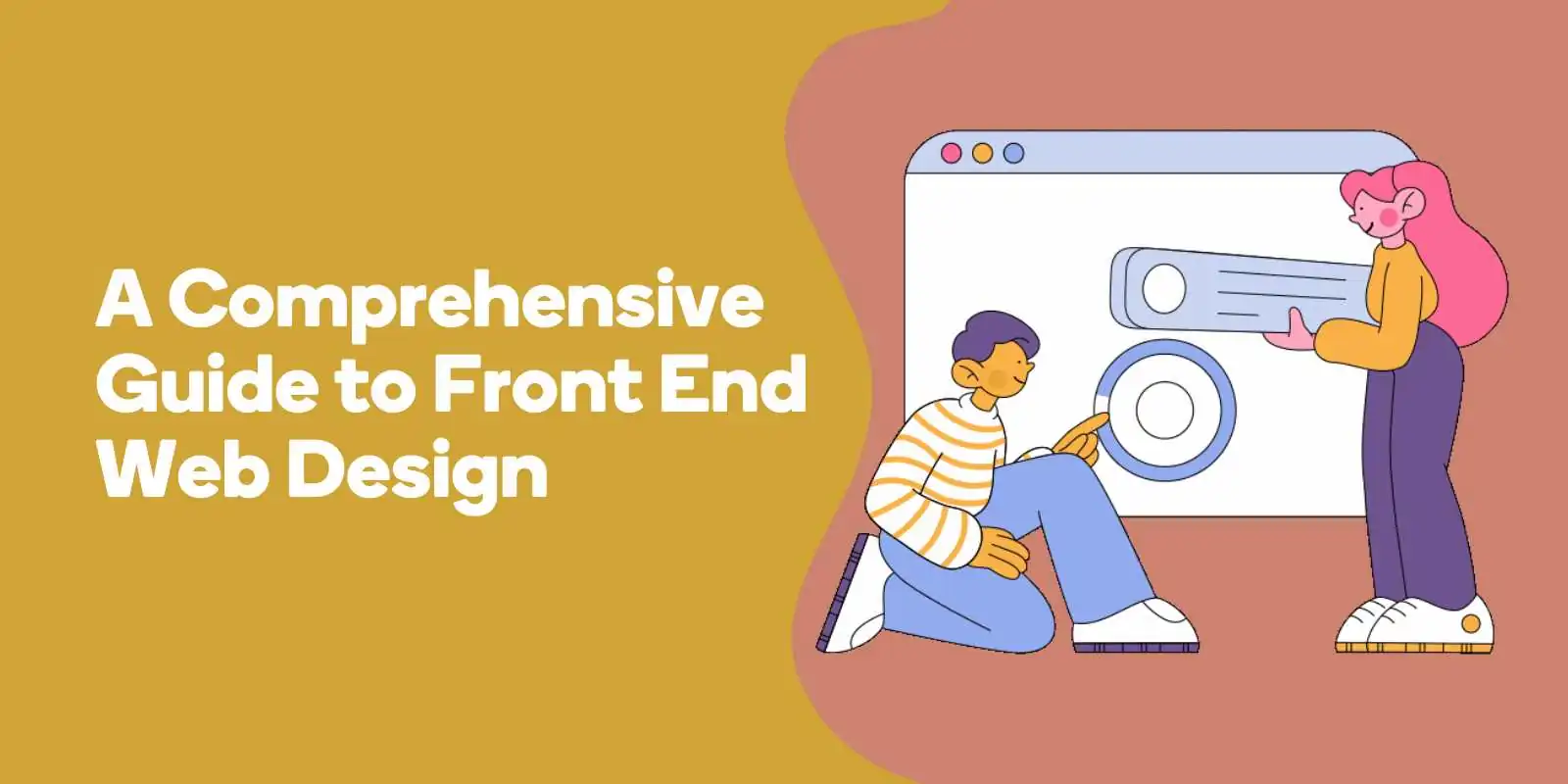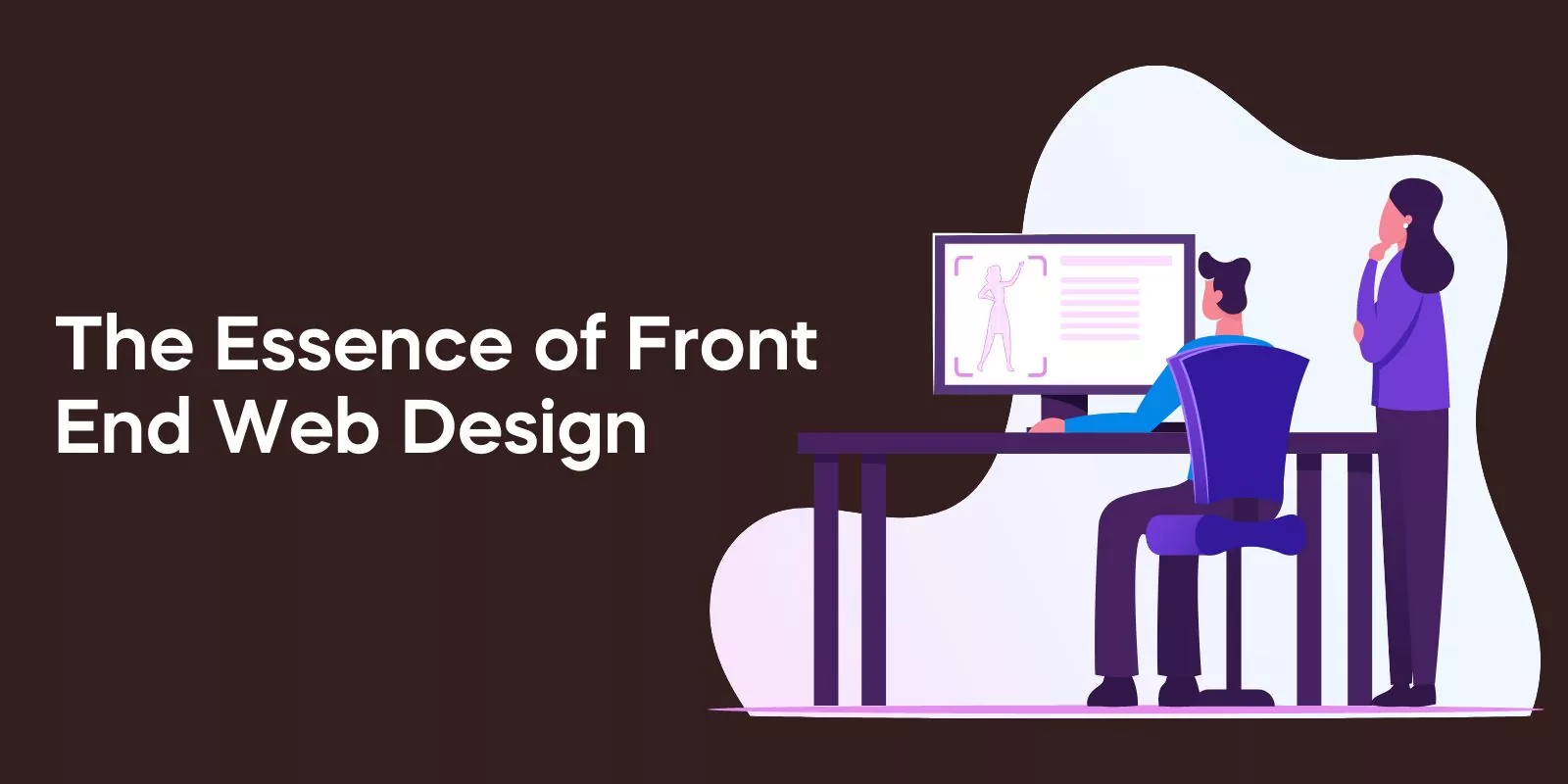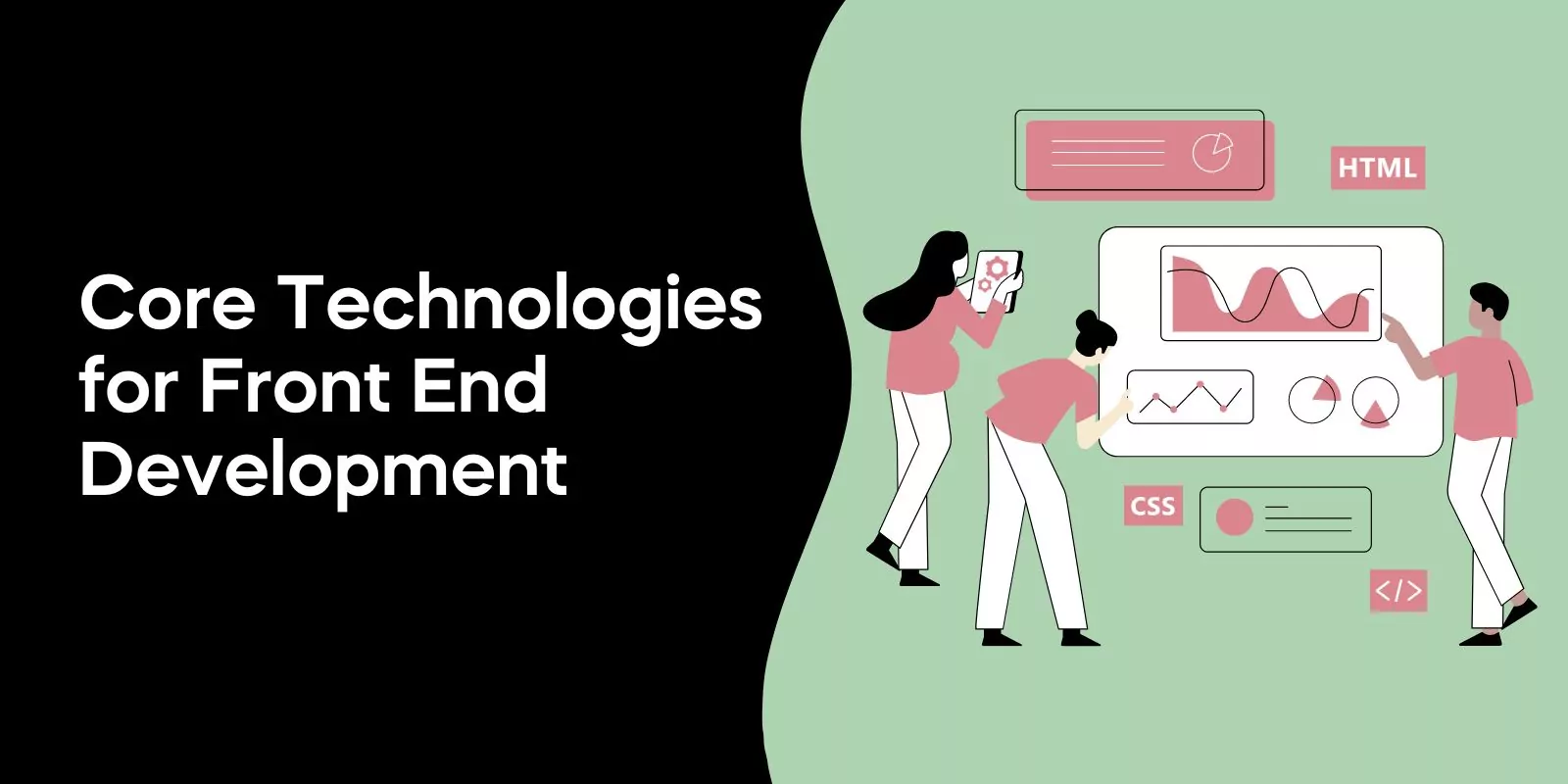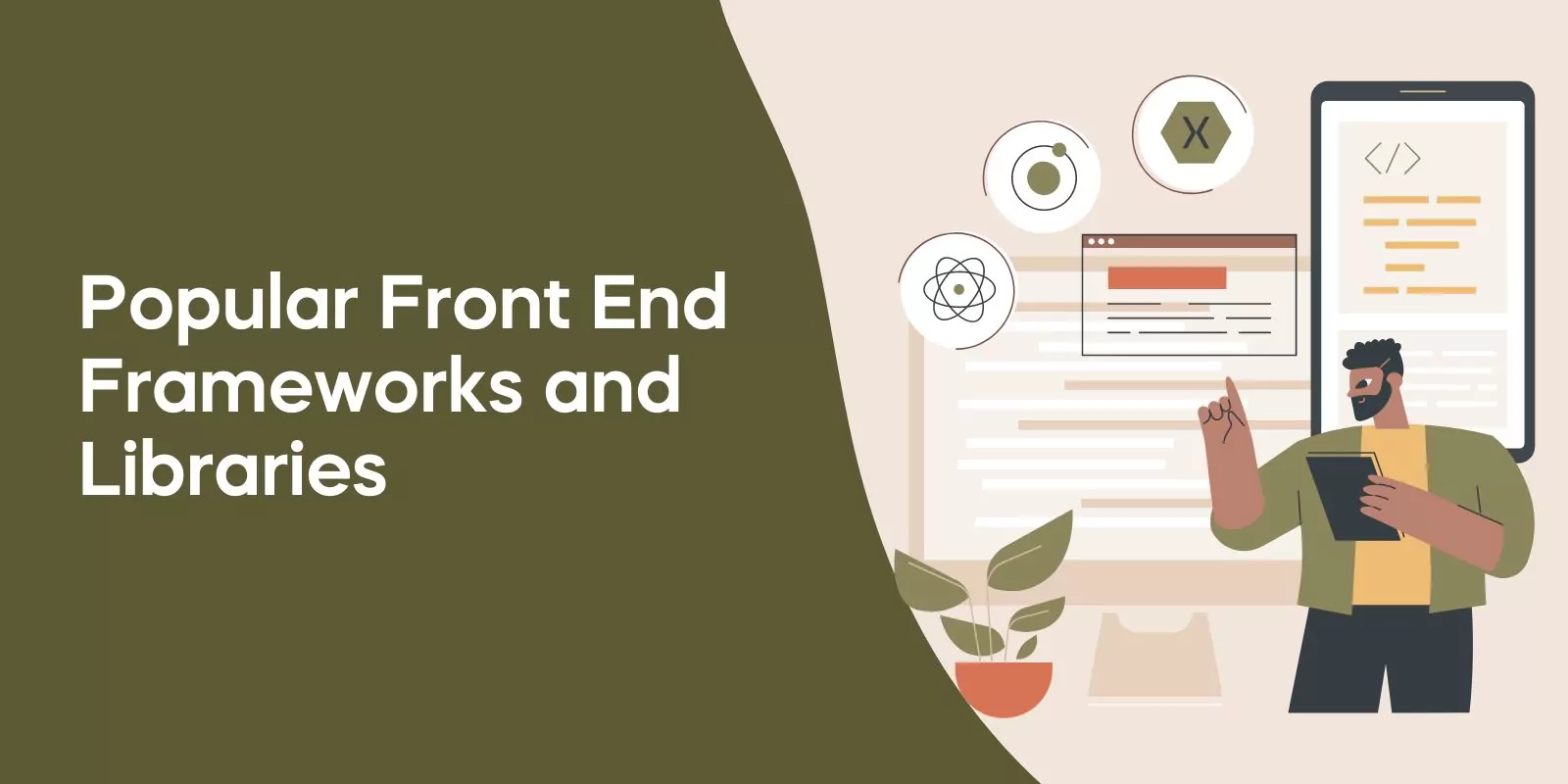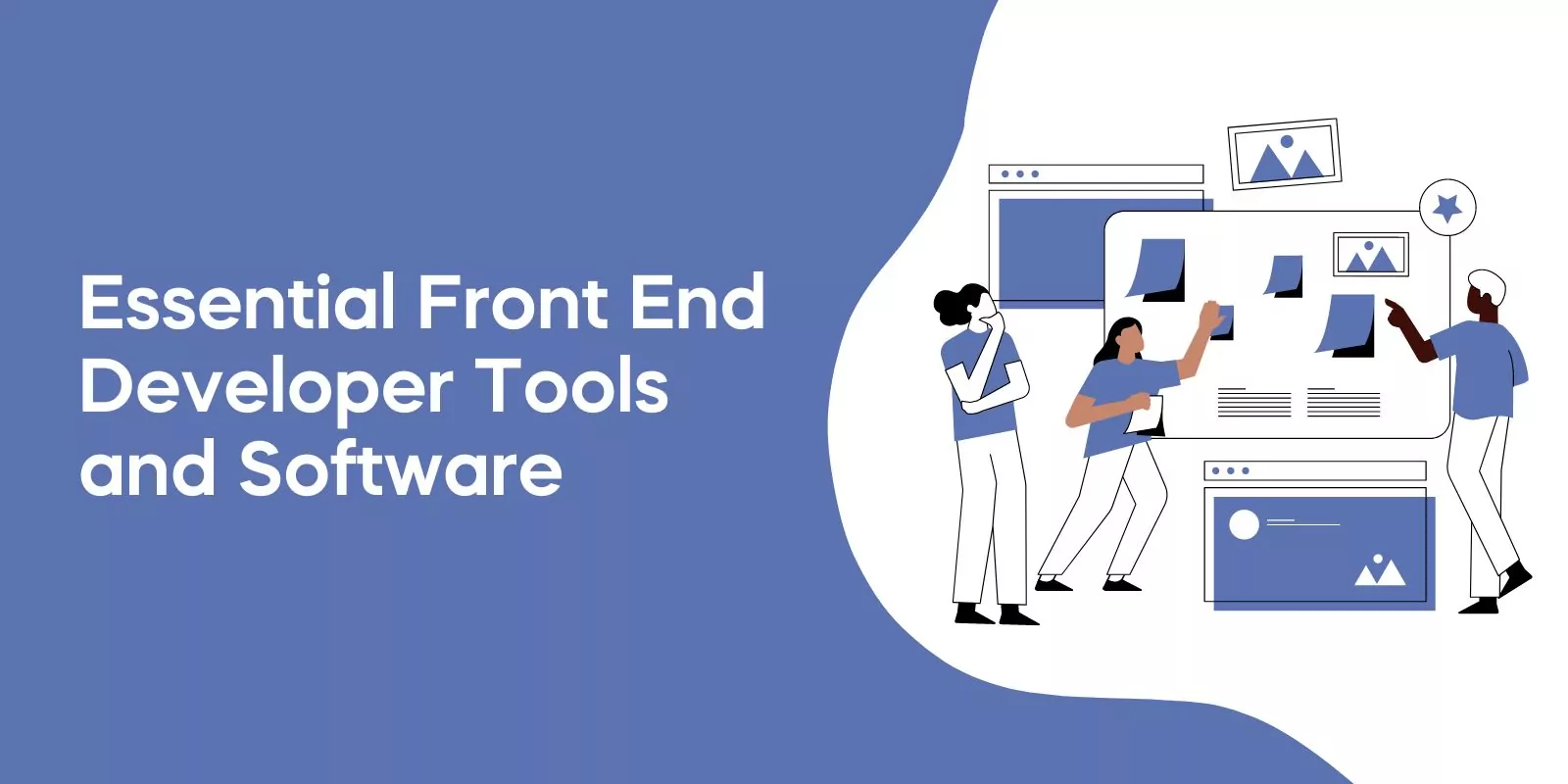This comprehensive guide will help aspiring web developers master the necessary skills and tools to excel in this growing field, from understanding the essence of front end web design to building a successful portfolio that showcases their expertise.
The Essence of Front End Web Design
Front end web design, a crucial aspect of front end web development, is the art and science of crafting the user interface of a web page or application to create an engaging and visually appealing experience.
As the face of web development, front end developers are responsible for bringing designs to life and ensuring seamless interactions between users and technology.
By mastering key components of front end design, such as layout, typography, and color schemes, front end developers can create websites and applications that not only look great but also perform optimally on a variety of devices, including smartphones and tablets.
Role of a Front End Developer
The role of a front end developer is multifaceted, as they are responsible for enhancing the layouts and overall visual appeal of a website.
They specialize in the visible elements of an online application or website, such as menus, modals, sliders, articles, and photo galleries, using web technologies like HTML, CSS, and JavaScript.
In addition to creativity and problem-solving abilities, front end developers must possess a willingness to learn and confront challenges, which are essential skills for a full stack developer as well as a stack web developer and a stack developer.
As the demand for front end developers continues to rise, those who demonstrate proficiency in a variety of skills and technologies will find themselves in high demand in a wide range of industries and locations.
Key Components of Front End Design
The essential elements of front end design encompass graphic design, user interface, layout, typography, color scheme, and navigation.
Utilizing web languages such as HTML, CSS, and JavaScript is necessary to create components that interact with users and provide a satisfactory user experience.
By focusing on these key components, front end developers can create web pages that not only look visually striking but also function seamlessly on a variety of devices.
This ensures that users have a pleasant experience when engaging with the website, ultimately leading to higher user satisfaction and brand loyalty.
Core Technologies for Front End Development
To create dynamic web pages and applications, front end developers rely on a core set of technologies: HTML, CSS, and JavaScript.
These three languages form the foundations of front end web design, enabling developers to structure web content, define visual styles, and add interactivity to their creations.
By mastering these core technologies, aspiring front end developers can build a solid foundation for their careers and unlock new possibilities in the ever-expanding world of web development.
HTML: The Structure
Hypertext Markup Language (HTML) plays a vital role in structuring web content and forming the basis of a webpage.
It is used to create and format web pages, enabling the development of headings, paragraphs, images, and other content.
HTML also aids browsers in comprehending how to display the content, ensuring that web pages appear consistently across different devices and platforms.
By mastering HTML, front end developers can ensure that their creations are visually appealing and functionally sound, laying the groundwork for more advanced design techniques and technologies.
CSS: The Styling
Cascading Style Sheets (CSS) are crucial for defining the visual aesthetics and styling of webpages.
By controlling elements such as layout, typography, and colors, CSS allows front end developers to create visually stunning and cohesive web designs that engage users and keep them coming back for more.
In addition to its versatility and flexibility, CSS also offers a number of benefits, such as improving the legibility of a website, reducing the amount of code required to construct a website, and facilitating the maintenance and updating of a website.
JavaScript: The Interactivity
JavaScript is the powerhouse behind the interactivity and functionality of modern web pages.
As a programming language, it enables developers to add dynamic elements and features, such as animations, form validation, and real-time updates, to their web designs.
By harnessing the power of JavaScript, front end developers can create engaging and interactive web experiences that keep users coming back for more.
Additionally, JavaScript can be employed to create powerful web applications, making it an essential tool in any front end developer’s toolkit.
Popular Front End Frameworks and Libraries
In addition to mastering core technologies like HTML, CSS, and JavaScript, front end developers often turn to popular frameworks and libraries to streamline their development processes and enhance their web designs.
Some of the most frequently utilized front end frameworks and libraries include Bootstrap, React, and Angular.
These tools offer pre-built components, reusable templates, and other resources that can save developers time and effort while ensuring that their creations adhere to best practices and industry standards.
Bootstrap
Bootstrap is a front-end framework that provides pre-designed HTML, CSS, and JavaScript components for constructing responsive and mobile-first websites.
It is extensively utilized by web developers to create modern and aesthetically pleasing websites quickly and efficiently.
By offering a comprehensive set of UI components, responsive design features, and cross-browser compatibility, Bootstrap enables developers to focus on the functionality and user experience of their creations, rather than getting bogged down in the minutiae of design and layout.
React
React is a popular JavaScript library for constructing user interfaces and managing UI components.
Developed and maintained by Facebook, React offers a number of advantages for front end development, such as a virtual DOM, component structure, JSX, one-way data binding, and a declarative user interface.
In addition to its speed, modularity, scalability, flexibility, and ease of learning, React has a vibrant community of developers who contribute to its ongoing development and provide support for new learners.
Angular
Angular is another widely-used front end framework, known for its ability to create dynamic single-page applications with enhanced functionality.
Developed by Google, Angular is an open-source web application framework that provides comprehensive full-stack development and enables the creation of progressive web applications.
While Angular has a steeper learning curve compared to some other front end frameworks, its powerful features, such as modularity, scalability, and support for multiple languages, make it a popular choice among developers looking to build complex web applications.

Award-Winning
Sales Funnel & Website Expert
Ready for Revenue – Not Just “Traffic”?
- Websites that Work: Clean, fast, built to convert – no design fluff.
- Funnels that Sell for You: Step-by-step paths that turn clicks into paying customers.
- SEO That Hunts Buyers: Show up exactly when prospects reach for their wallets.
Essential Front End Developer Tools and Software
To improve their workflow and productivity in software development, front end developers rely on a variety of essential tools and software.
These tools, such as version control systems, code editors, and browser developer tools, help developers manage their code, collaborate with others, and debug issues efficiently and effectively.
By mastering these essential tools, front end developers can ensure that they are well-equipped to tackle the challenges of modern web development and create high-quality, user-friendly web designs as an end web developer.
Version Control Systems
Version control systems, such as Git, play a crucial role in tracking and managing changes to source code over time.
These tools provide developers with the capability to recall specific versions of the code at a later point, allowing for easier collaboration, debugging, and rollback in case of issues.
By utilizing version control systems, front end developers can work more efficiently and effectively, ensuring that their code remains organized, up-to-date, and accessible to all members of the team.
Code Editors
Code editors are software applications used to compose and refine code, with features such as syntax highlighting, auto-completion, and debugging tools that make writing and editing code more efficient and enjoyable.
Popular code editors, such as Visual Studio Code and Sublime Text, provide a user-friendly interface and a wealth of features that help front end developers create clean, well-organized code quickly and effectively.
By mastering the use of code editors, front end developers can ensure that their code is well-structured, readable, and easy to maintain.
This makes it easier to debug and maintain code, as well as to collaborate with other developers. With the right code editor, front end developers can create code that is both efficient and enjoyable to work with.
Browser Developer Tools
Browser developer tools are integrated into web browsers like Chrome, Firefox, and Safari, and enable developers to inspect and debug web pages directly within the browser.
With features such as inspecting HTML and CSS, debugging JavaScript, and analyzing network requests, browser developer tools are an invaluable asset for front end developers looking to create high-quality, error-free web designs.
By mastering the use of browser developer tools, developers can streamline their workflow and ensure that their web designs perform optimally across a wide range of devices and platforms.
Building a Successful Front End Web Design Portfolio
A strong front end web design portfolio is essential for showcasing your skills and attracting potential clients or employers.
By carefully selecting projects, presenting them in an organized and visually appealing manner, and maintaining an online presence, you can create a portfolio that not only demonstrates your expertise but also sets you apart from the competition.
In the following sections, we’ll explore tips and advice for building a successful front end web design portfolio that highlights your unique talents and abilities.
Selecting Projects
The projects you choose to include in your portfolio should best represent your skills and expertise in front end web design.
When selecting projects, consider factors such as strategic alignment with business objectives, assessment of resource capabilities and availability, evaluation of potential risks, influence on customer satisfaction and brand loyalty, and data availability and anticipated revenue.
By showcasing a diverse range of projects that demonstrate your ability to tackle various challenges, you can create a portfolio that highlights your versatility and problem-solving skills.
Presentation and Organization
The way you present and organize your portfolio projects is just as important as the projects themselves.
A visually appealing and user-friendly portfolio makes it easy for potential clients or employers to quickly assess your skills and abilities.
To ensure optimal presentation and organization, maintain a straightforward, navigable, and uniform presentation for each project.
Additionally, consider highlighting your most impressive work and eliminating any projects that are no longer applicable or up-to-date.
Online Presence
In addition to a well-crafted portfolio, a strong online presence is essential for promoting your front end web design work and building your reputation in the field.
By developing a personal website, maintaining an active presence on social media platforms, and engaging in online communities related to web development, you can establish yourself as an authority in the field and attract a wider audience of potential clients and employers.
Furthermore, optimizing your website for search engines, creating high-quality content, and building relevant links can help increase your visibility and drive traffic to your portfolio.
Pathways to Becoming a Front End Developer
There are several pathways to becoming a front end developer, each with its own advantages and challenges.
Whether you choose to pursue self-learning, enroll in certification courses, or obtain a formal degree in computer science or a related field, the key to success lies in your dedication to mastering the skills and knowledge necessary to excel in this dynamic field.
In the following sections, we’ll explore the various ways you can learn front end web design skills and enter the field as a professional developer.
Self-Learning
Self-learning is a viable option for those looking to acquire front end web design skills without enrolling in formal education programs.
With a wealth of online resources, tutorials, and courses available, self-learners can gain the knowledge and practice needed to develop their skills and expertise in front end web design.
The key to success in self-learning lies in setting achievable goals, breaking the material into smaller, manageable components, and staying motivated throughout the learning process.
By dedicating time and effort to self-study, aspiring front end developers can build a solid foundation in the field and gain the confidence needed to tackle more advanced projects and challenges.
Certification Courses
Certification courses and programs offer another path to learning front end web design skills while providing industry-recognized credentials.
Popular platforms such as Udacity and W3C offer a variety of online courses and nanodegree programs designed to teach front end development, ranging from beginner to advanced levels.
By enrolling in certification courses, aspiring front end developers can receive structured, expert-led instruction, gain hands-on experience through practical projects, and build a portfolio that showcases their skills to potential clients and employers.
Degree Programs
Pursuing a formal education in computer science or a related field can provide a comprehensive foundation in front end web design, as well as a deeper understanding of the industry and the tools used in the field.
Degree programs in web development, computer science, graphic design, computer engineering, multimedia design, or media arts can equip aspiring front end developers with the knowledge and skills necessary to excel in their careers.
While a degree is not a requirement to work as a front end developer, having a formal education can offer additional advantages, such as access to networking opportunities, internships, and job placement services.
Frequently Asked Questions
Do front-end developers do web design?
No, a front-end developer does not traditionally do web design. Instead, they develop the web code and take care of programming elements while web designers create the visuals for a website.
How do I become a front end web designer?
To become a front end web designer, obtain a degree in computer science or related field and become proficient in coding languages such as HTML, CSS, JavaScript, and jQuery. Enhance your skills by practicing coding, learning server-side CSS and graphic design applications, understanding the principles of SEO, and participating in coding challenges and open source projects.
What is the front end of a website?
The frontend of a website is the interface you see when you open it on your browser. It’s made up of HTML, CSS, and JavaScript which determine how it looks and functions for the user.
All these components come together to form the visuals and interactions you experience when visiting a website.
What does a front-end developer do?
As a Front-End Developer, you create the visual components that users see and interact with when they visit a website or app. Your work involves combining the principles of design, technology, and programming to code the interface for web applications.
You also help debug any technical issues and ensure the page loads quickly.
What are the core technologies used in front end web development?
Front end web development relies heavily on HTML, CSS and JavaScript to build modern websites and web applications. These three technologies form the foundation of web development, and provide the user with the interface they will interact with.
Conclusion
In conclusion, front end web development is an exciting and dynamic field that offers numerous opportunities for creativity, problem-solving, and professional growth.
By mastering core technologies like HTML, CSS, and JavaScript, leveraging popular frameworks and libraries, and building a strong portfolio, aspiring front end developers can pave their way to success in the industry.
Whether through self-learning, certification courses, or degree programs, the key to success lies in dedication, perseverance, and a commitment to lifelong learning.
With the right mindset and the right skills, the possibilities for a rewarding career in front end web development are truly limitless.
